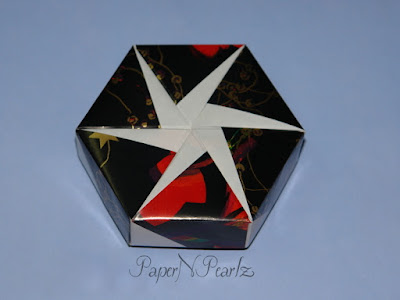The Knob Box lid, designed by Jorge E Jaramillo, is one that I had tried some time back and hadn’t quite succeeded. I gave it another go and this time I did complete it :) The most difficult part of the lid was twisting it into the knob, after creasing the folds of the knob. I found the model quite challenging and so have been making a few of them, just to get the hang of it.
The model requires a fairly large square of paper to get a reasonably sized box. I initially used a 12 inch square and then a 9 inch square. The 12 inch one turned out to be nice and big and the 9 inch one was smaller but more to my liking.
The base is simpler to make and is designed by Anna Kastlunger. She has also made a series of tutorial videos on making the lid and the base. Considering that there is only a CP available to fold the lid, I wouldn’t have even attempted the model if not for her tutorial! There are a series of 5 videos (4 for folding the lid and 1 for the base) and are detailed and very well presented.
Model Details:
Model: Knob Box
Creator (Lid): Jorge E Jaramillo
Creator (Base): Anna Kastlunger
Difficulty Level: High Intermediate
Paper Ratio: Square
Paper Size: 9 - 12 inches
Crease Pattern (Base): Flickr!
Crease Pattern (Lid): Flickr!
Tutorial (Lid): Part 1, Part 2, Part 3, Part 4
Tutorial (Base): Youtube























